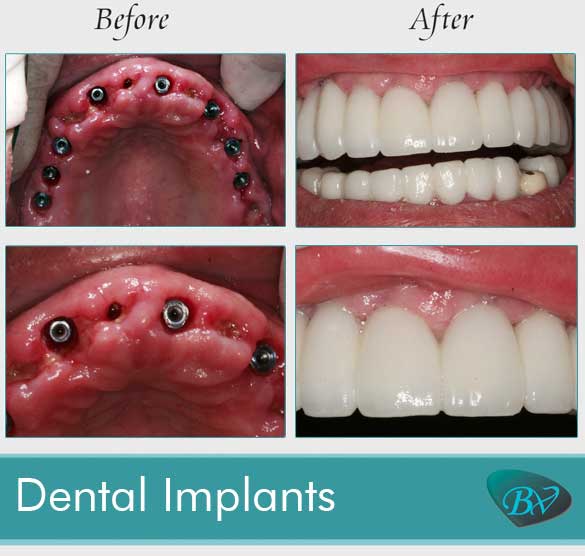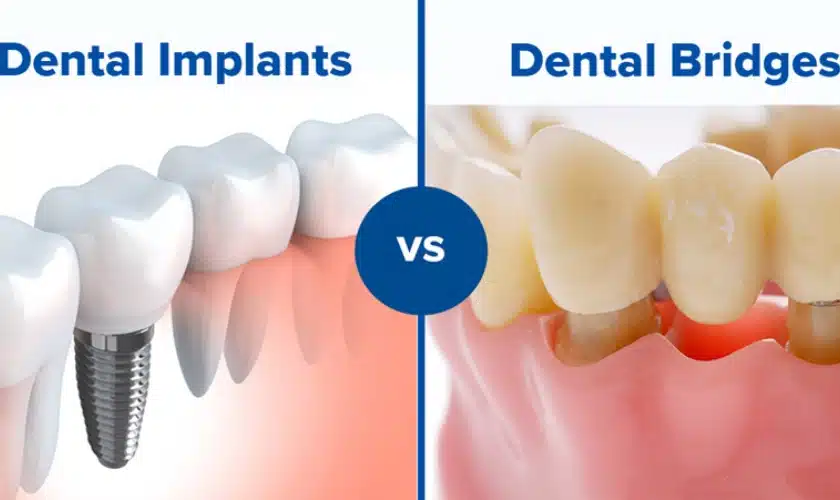The Main Principles Of Dental Sense
The Main Principles Of Dental Sense
Blog Article
Unknown Facts About Dental Sense
Table of ContentsNot known Facts About Dental SenseHow Dental Sense can Save You Time, Stress, and Money.The 5-Second Trick For Dental SenseDental Sense Things To Know Before You Buy
are clinical tools operatively dental implanted right into the jaw to bring back a person's capability to eat or their appearance. They provide assistance for synthetic (fake) teeth, such as crowns, bridges, or dentures. When a tooth is lost because of injury or condition, a person can experience problems such as rapid bone loss, faulty speech, or adjustments to eating patterns that cause discomfort.Dental dental implant systems contain a dental implant body and dental implant joint and might likewise include an abutment fixation screw. Same day dental implants. The dental implant body is surgically placed in the jawbone in area of the tooth's root. The dental implant joint is generally connected to the implant body by the abutment fixation screw and prolongs with gums into the mouth to support the connected fabricated teeth
(https://matthewmusic33101.wixsite.com/dental-sense/post/dental-veneers-cost-kids-dental-and-dental-implant-vs-bridge-what-you-need-to-know)Structure of The Dental Implant System selecting oral implants, speak with your oral copyright about the possible benefits and threats, and whether you are a candidate for the procedure. Things to think about: Your general health is an important aspect in establishing whether you are an excellent prospect for dental implants, exactly how long it will take to recover, and the length of time the dental implant may remain in location.
Cigarette smoking may impact the healing procedure and lower the long-term success of the implant. The healing procedure for the dental implant body might take a number of months or longer, during which time you normally have a temporary joint in place of the tooth. the dental implant treatment: Carefully follow the oral health guidelines provided to you by your dental service provider.
The Ultimate Guide To Dental Sense
Implant failing can cause the demand for another surgery to take care of or replace the dental implant system. Brings back the ability to eat Brings back aesthetic look Assists keep the jawbone from shrinking as a result of bone loss Maintains the health and wellness of the bordering bone and gums Aids keep nearby (close-by) teeth stable Boosts lifestyle Damages to surrounding all-natural teeth during implant positioning Injury to the surrounding cells during surgical procedure, such as sinus opening Injury during surgical treatment (for instance, fracture of surrounding jawbone) Poor function, such as really feeling like the teeth do not attack together usually A feeling that the tooth is loose or turning in position arising from a joint screw loosening Implant body failing (looseness of the implant body) due to systemic infection, which might be most great site likely in clients with unchecked diabetics issues as a result of neighborhood infection in bone and periodontals supporting the dental implant body as a result of postponed recovery, which may be most likely in individuals who smoke Difficulty cleansing the gums around the implant, causing inadequate dental health Without treatment periodontal disease Post-surgical pins and needles as a result of nerve impingement or damage Constantly inform wellness treatment service providers and imaging specialists that you have oral implants before any kind of magnetic vibration imaging (MRI) or x-ray procedures.
FDA is not familiar with any kind of negative events reported for MRI or x-ray procedures with dental implants. Dental implants systems are usually constructed from materials that adhere to international agreement standards of the International Company for Standardization (ISO) or ASTM International. These standards have details of what makes a safe product.

An oral implant is a framework that replaces a missing tooth. With screw-like devices, the cosmetic surgeon inserts a dental implant into the jawbone, and it functions as a support for an artificial tooth, called a crown. A gadget called a joint links the synthetic tooth to the dental implant. The crown is personalized to fit the individual's mouth and match the shade of their teeth.
Everything about Dental Sense
Some individuals are not qualified for oral implant surgery. It is for dental doctors to run on people with: acute illnessuncontrollable metabolic diseasebone or soft cells disease or infectionIf these problems are settled, a person can have the surgery. In, oral doctors refrain from operating individuals with: If people with any one of the above undertake dental implant surgical procedure, there is a greater risk of the implant stopping working.

Oral implant surgery is a customized process. Provide you time to heal. Connect the message and final crown, bridge or denture.
Next off, your cosmetic surgeon will carefully put the oral implant into your jaw. Finally, your surgeon will certainly rearrange your gum tissues and shut the cut with stitches. If your dental implant is near the front of your mouth, your dental practitioner will make a short-term tooth for you to put on till you recover. That method, you will not have a space in your smile while you recover.
Dental Sense Fundamentals Explained
During the healing phase, your jawbone ought to fuse to the dental implant. This procedure can take anywhere from three to 9 months.
As soon as your implant heals, your dental professional can affix the abutment (little port post) and your final remediation (crown, bridge or denture). This generally takes concerning one hour to finish and might require a second minor surgery. You should not really feel any type of pain during your oral implant treatment because your supplier will certainly utilize drug to numb your gum tissues.
Report this page